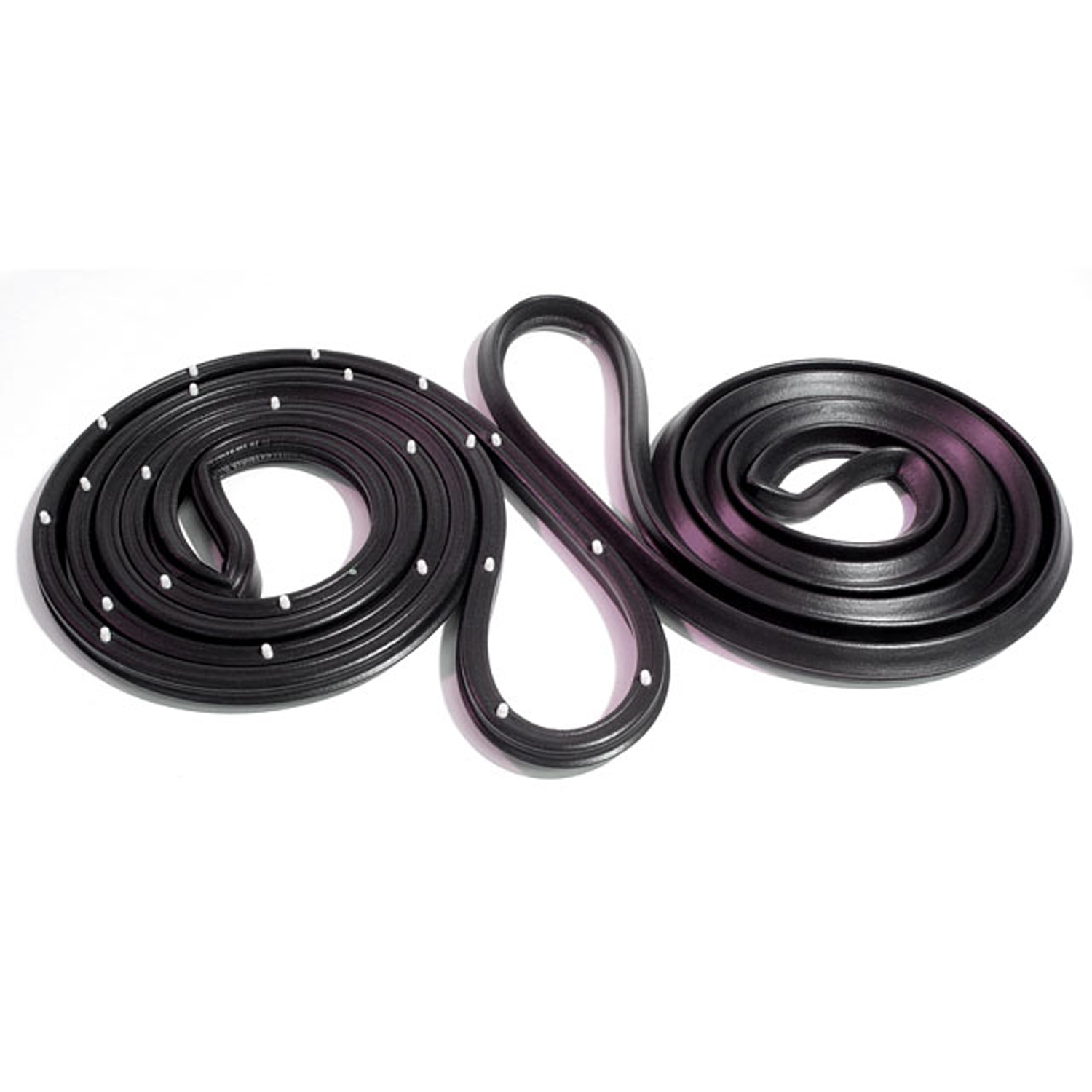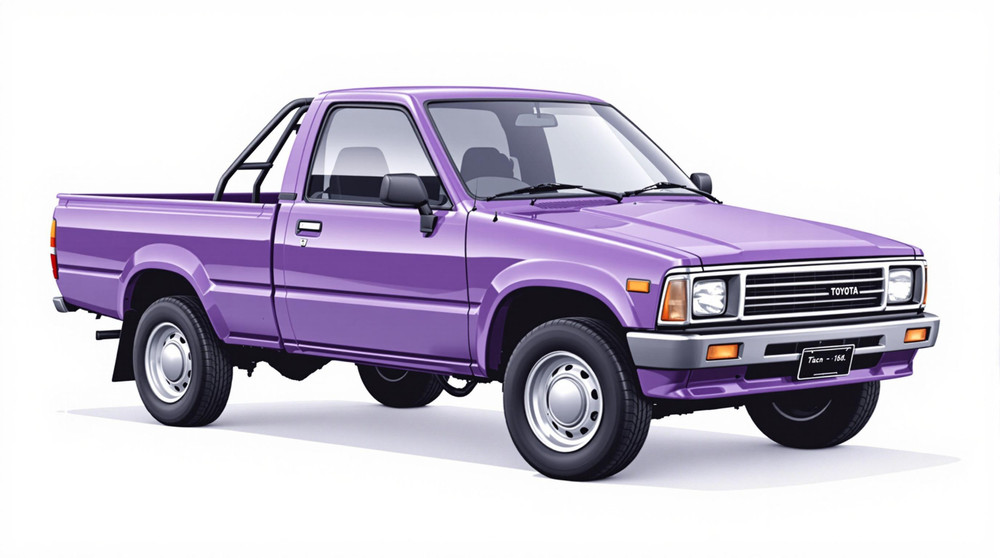Image of 1987 Toyota Pickup, Note: These illustrations use artistic license and may differ from actual historical models.
Performance Metrics
Fundamental Metrics
Emotional Appeal
MMP Rating
| Engine Specifications | |
|---|---|
| Engine Options: | 2.4L 4-cylinder, 3.0L V6 |
| Displacement Range: | 2.4L - 3.0L |
| Horsepower Range: | 97-150 hp |
| Torque: | 123-180 lb-ft |
| Compression Ratio: | 9.3:1 (2.4L), 9.0:1 (3.0L) |
| Ignition System: | Electronic |
| Cooling System: | Liquid-cooled |
| Performance Specifications | |
| 0-60 Time: | 10-12 seconds |
| 1/4 Mile Time: | 17-18 seconds |
| Top Speed: | 100-105 mph |
| Transmission and Drive | |
| Drive Type: | Rear-wheel drive (RWD), Four-wheel drive (4WD) |
| Transmission Type: | 4-speed automatic, 5-speed manual |
| Fuel and Efficiency | |
| Fuel System Type: | Fuel Injection |
| MPG: | 17-22 mpg |
| Dimensions and Brakes | |
| Brakes: | Front Disc/Rear Drum |
| Wheelbase: | 103-122 inches |
| Weight: | 3,000-3,500 lbs |
Note: Specifications for classic cars are given to the best of our ability, considering the limited and variant data available.
Unsung Hero of Durability: The 1987 Toyota Pickup
The year 1987 brought us many things, but none quite as enduring as the Toyota Pickup. This compact workhorse emerged from the heart of Japan's automotive industry, a testament to Toyota's commitment to reliability and functionality. While it may not have the flash of sports cars or the opulence of luxury vehicles, the 1987 Toyota Pickup holds a special place in automotive history. It's the unsung hero that proved its mettle on farms, construction sites, and even in Hollywood with its unforgettable role in "Back to the Future."
Design and Innovation
With its clean lines and no-nonsense stance, the 1987 Toyota Pickup was designed for utility but managed to exude a certain timeless charm. The exterior was simple yet robust, with a front grille that was unmistakably Toyota. Inside, the cabin was straightforward with durable materials meant to withstand the rigors of daily use. Though not luxurious by any means, the interior offered practical comfort and was surprisingly spacious for a compact truck. Technologically, it featured advancements like electronic fuel injection for some models, which was quite innovative for the time. Color options ranged from subdued to vibrant, with shades like Cardinal Red and Sky Blue being popular picks among buyers. The most iconic body style was undoubtedly the single cab short bed, often seen with a sporty stripe running along its side.
Historical Significance
The 1987 Toyota Pickup didn't just carry loads; it carried the era's evolving expectations of what a compact truck could be. It set itself apart with its unyielding dependability and affordability. Its design would influence not only future Toyota trucks but also the approach of other manufacturers to compact truck design.
Performance and Handling
Under the hood, the 1987 Toyota Pickup was more about stamina than speed. While top speeds and acceleration times were modest by today's standards, this truck was never about racing—it was about getting the job done. Handling was reliable, with a suspension that could take on bumps without jarring occupants excessively. Drivers often praised the truck for its predictable road manners and the satisfying mechanical symphony of its engine.
Ownership Experience
Owners of the 1987 Toyota Pickup typically used it as a daily driver or work vehicle, praising its low cost of ownership and ease of maintenance. Its reliability became legendary, with many trucks clocking hundreds of thousands of miles without major issues. The simplicity of its design made it an ideal candidate for DIY repairs.
Fun Facts
The 1987 Toyota Pickup has its share of quirky trivia. It gained cinematic fame in "Back to the Future Part III," where it was Marty McFly's dream vehicle. While not known for breaking speed records, it certainly set benchmarks for durability. Criticisms were few but often targeted its modest power output and basic amenities.
Collector's Information
Today, a well-preserved 1987 Toyota Pickup can fetch a wide range of prices, often influenced by condition, mileage, and originality. Production numbers were substantial, but finding one in pristine condition is becoming increasingly rare. As for appreciation, these trucks have begun to see an uptick in value as enthusiasts recognize their place in automotive history.
Conclusion
The 1987 Toyota Pickup may not have been born a superstar, but it earned its stripes through years of dependable service. It's a vehicle that represents an era of straightforward engineering and an ethos of reliability that resonates with truck lovers to this day. As we look back at this humble yet mighty pickup, we can't help but admire its lasting legacy in the world of automobiles.
1987 Toyota Pickup Catalog of Parts
 1987 Toyota Pickup Door seals. '84-'88 Toyota 4-Runner & pick-up trucks. Pair-LM 135Door seals. '84-'88 Toyota 4-Runner & pick-up trucks. Pair. R&L.
1987 Toyota Pickup Door seals. '84-'88 Toyota 4-Runner & pick-up trucks. Pair-LM 135Door seals. '84-'88 Toyota 4-Runner & pick-up trucks. Pair. R&L.Why Choose Metro?
For over 100 years, Metro Moulded Parts has been the pinnacle of quality in classic car restoration parts. Our commitment to precision and authenticity in every component ensures a perfect fit and an OEM-level appearance.
- Expert Craftsmanship & Quality: Each part is a testament to our dedication to reliability and perfection, crafted from original designs and thoroughly tested.
- Advanced Technology: We use cutting-edge techniques to create flawless, long-lasting parts that surpass others in performance.
- SuperSoft Sponge – The Ultimate Door Seal: Not only are our door seals 30% softer than competitors', but they're also guaranteed to never leak. They effectively reduce wind and road noise, enhancing your classic car's comfort and driving experience.
- Proudly American: Our parts are a product of American craftsmanship, made in the USA with a spirit of excellence and heritage.
- Unrivaled Warranty: We back our products with a 30-year industry-leading warranty, a testament to our confidence in their quality.
Join us in preserving the legacy of classic cars with parts that are crafted for perfection, not just made.

